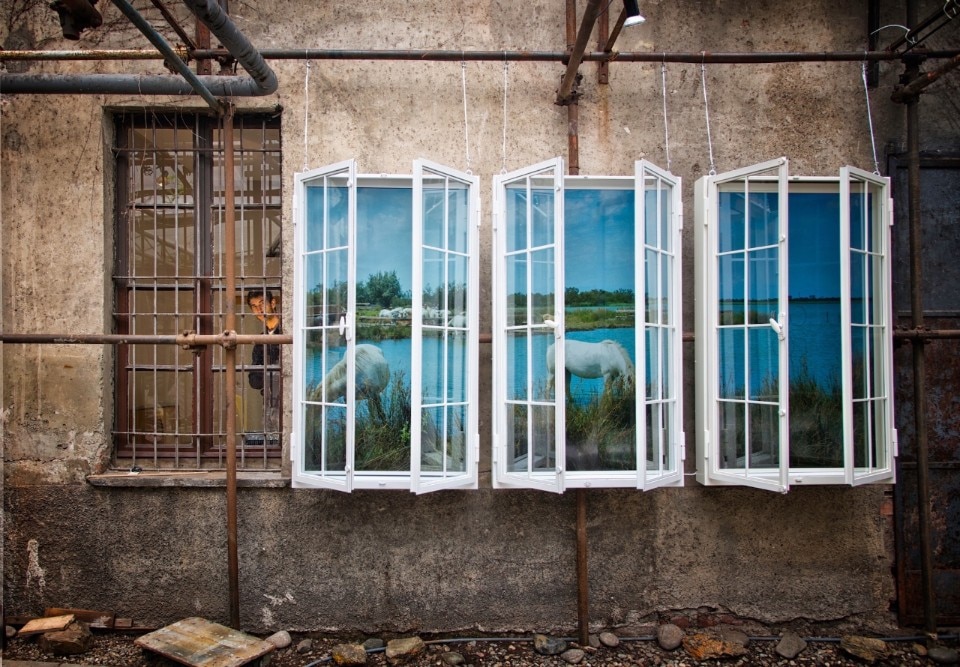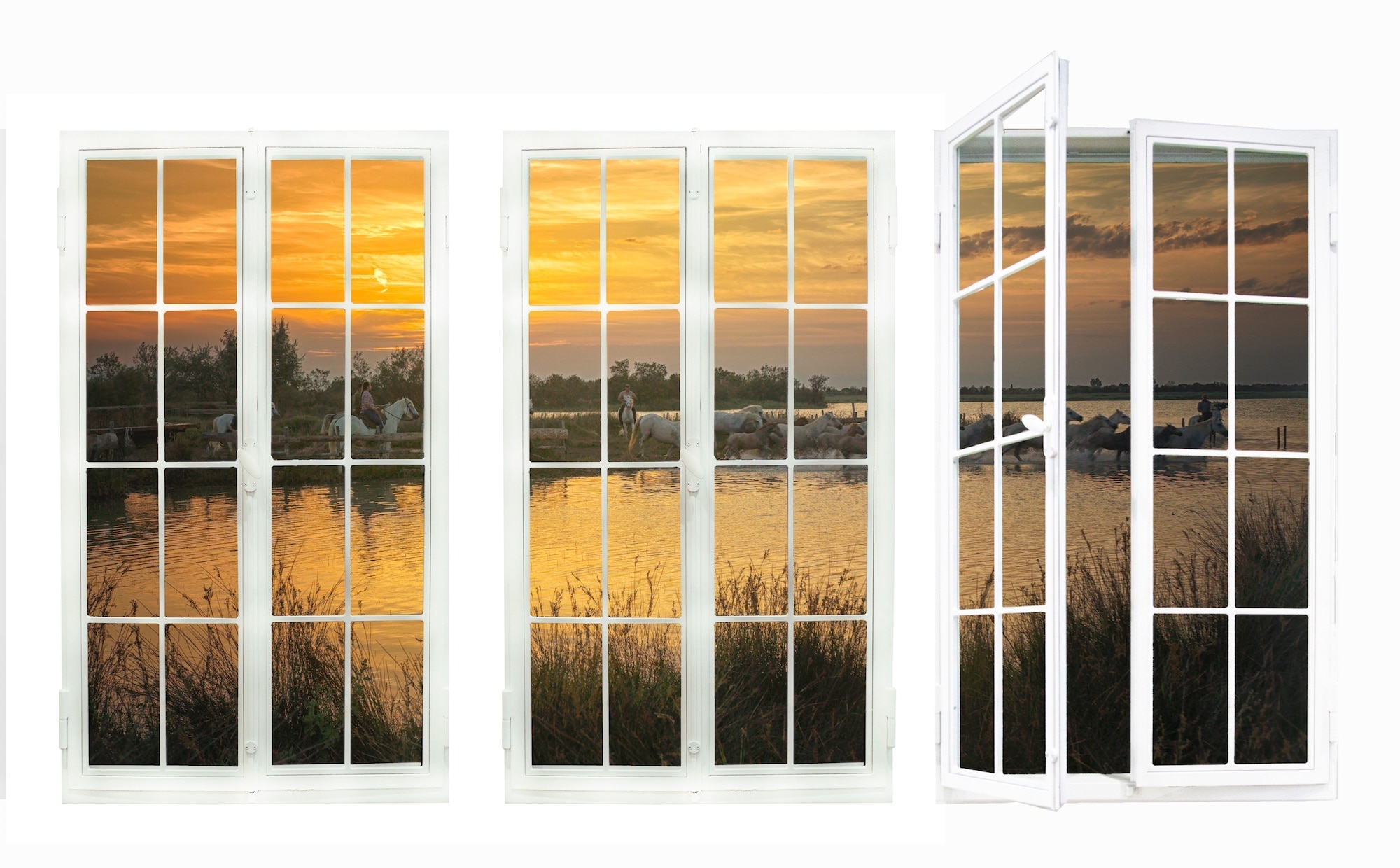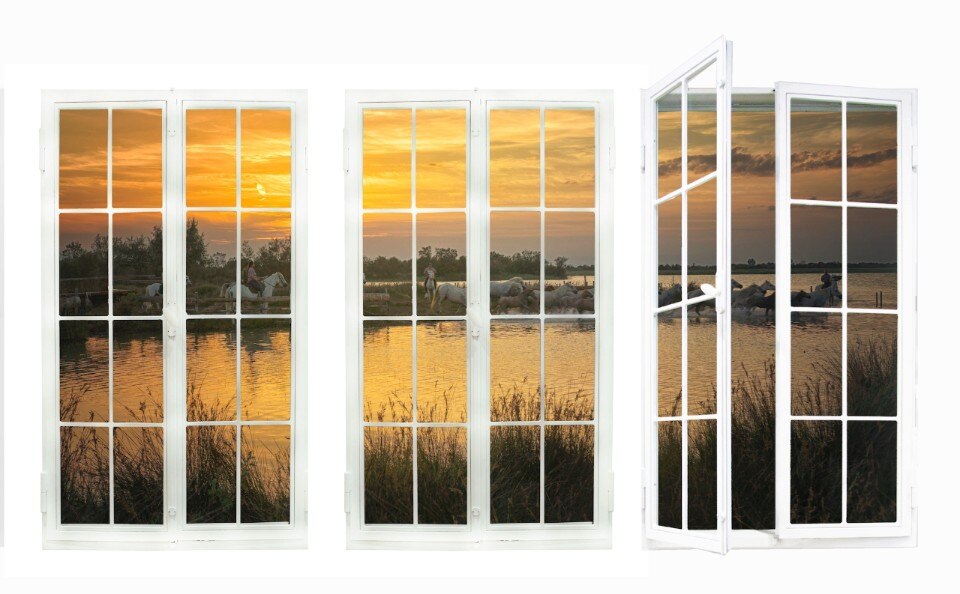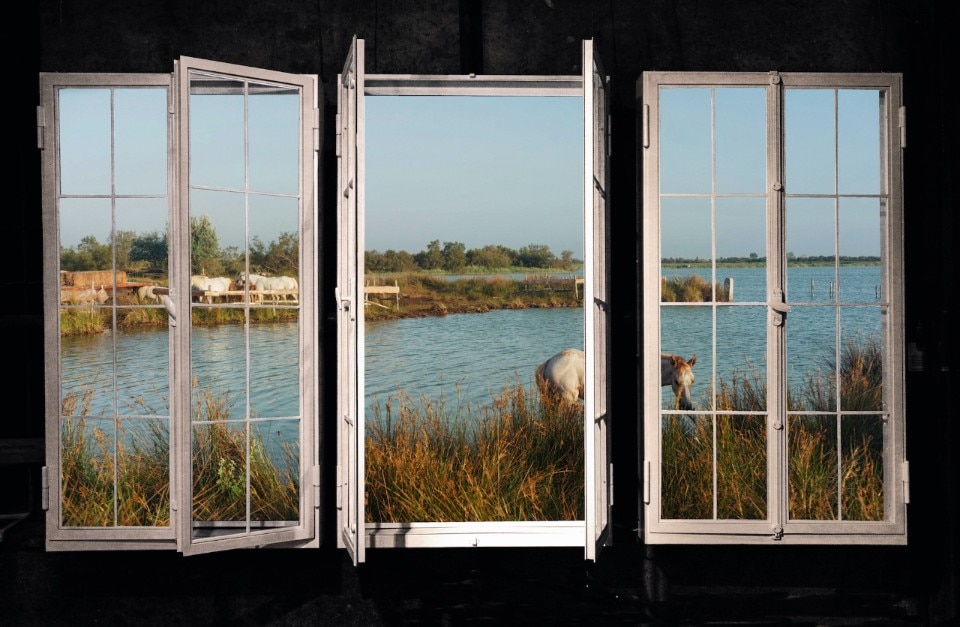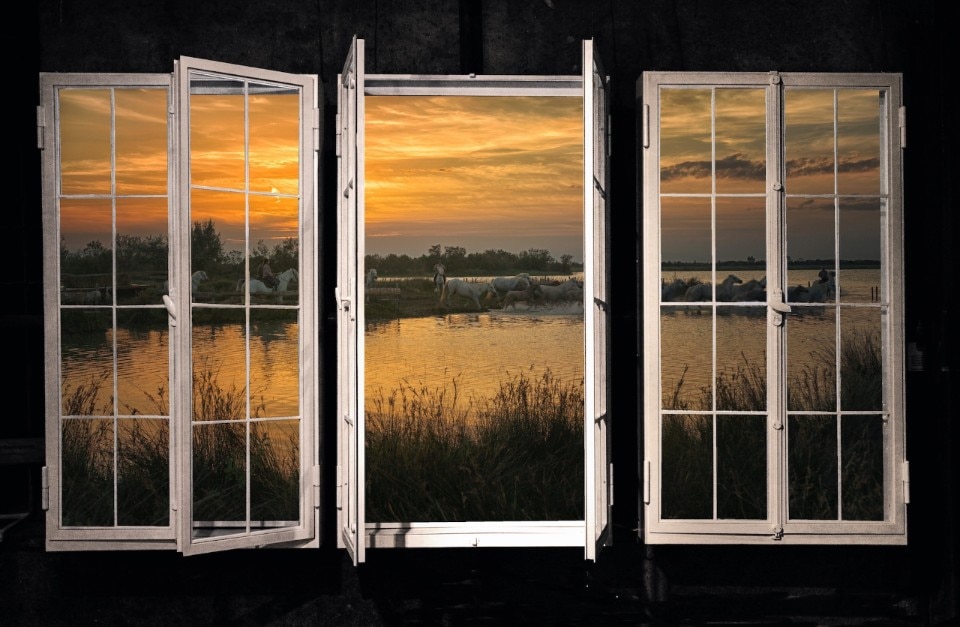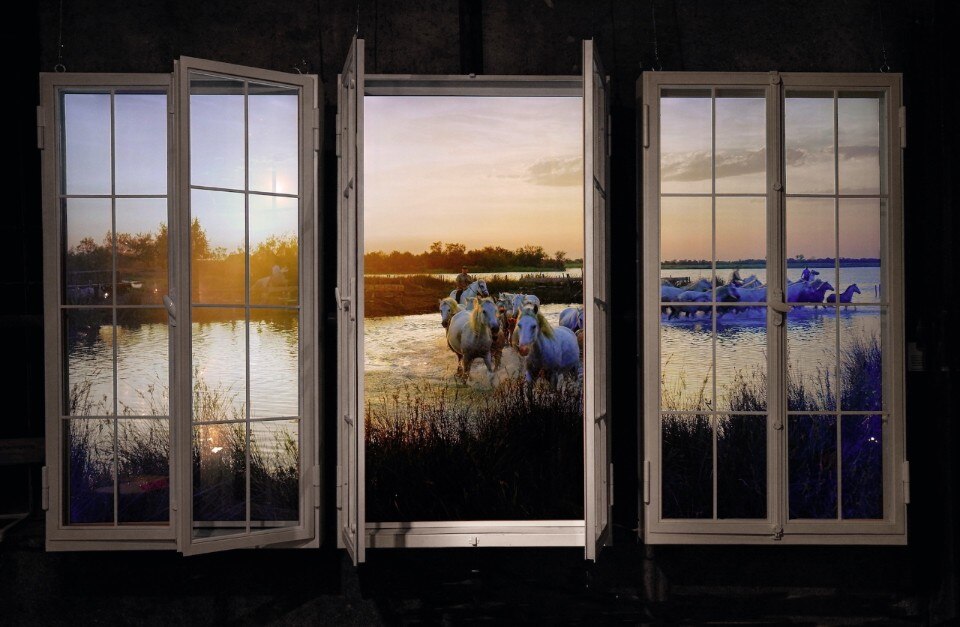Not long after we had presented our video on Venice at the Rossana Orlandi store during the 2017 Milan Furniture Fair, we were asked by Sé London, a luxury furniture producer, to contribute to a display at its shop in the British capital.
The theme was "savoir-faire", and the subject matter was Southern France.
I confess that initially, we were intent on filming the traditional localities of the Côte d'Azur or the Provence.
But those choices soon seemed banal. We were in the mood for something different and more adventurous.
I remembered a family holiday I had enjoyed in the Camargue many years ago. In my mind's eye, I could still see (or at least I imagined so) long-haired gypsies driving cars with powerful engines, and religious processions along the sea-front. The landscape seemed like a border zone, giving the feeling you were somewhere between France, Italy and Spain. I could also still see the white horses.
We rented a car for a weekend in early July and drove there with Tatiana, an Anotherview member. After a number of fruitless encounters, we found the right place for us.
Close to the ornithological park of Pont de Gau right outside Saintes-Maries-de-la-Mer lies Domaine de Maguelonne, a private horse-riding centre owned by Serge Capitani. A helpful Swiss horse breeder living in the Camargue described him to us as the head of one of the best-known clans here. Yes, there are still clans in the Camargue, big families that have been fake rivals for centuries, competing for local importance mostly through tough talk.
Serge Capitani is a small man whose face looks dried out from too many summer days spent on horseback. His manner is abrupt and quite direct.
If we want to stay on his land to film his horses around the pond for 24 hours, there is no problem, but he wants to be paid.
The (very reasonable) fee includes the right to pitch our tent and set up our equipment on the banks of his pond. His herd is made up of 11 mares and 12 foals. He shows them to us as they graze in the shade of two short trees growing by the water's edge. Traditionally, the pond is where Capitani keeps mares that have recently given birth. This is a sort of maternity vacation lasting one year, during which the horses are allowed to roam on the fields adjacent to the pond. They are fed continuously and are exempt from work. Capitani's workers would guarantee the presence of the mares and foals for the entire duration of the day by distributing food strategically. We can tell that he is proud of the fact that we have chosen his property and horses to film for our project. In addition to this service, he offers us what he calls a "show", whose dynamics are not entirely clear. But we accept, not wanting to look a gift horse in the mouth.
We return to Milan with great enthusiasm, sure to have found the scenery we had in mind for the display themed on the South of France.
One week later, Robert, the third and final member of Anotherview, came back from The Netherlands, and together we travelled to Maguelonne to begin filming.
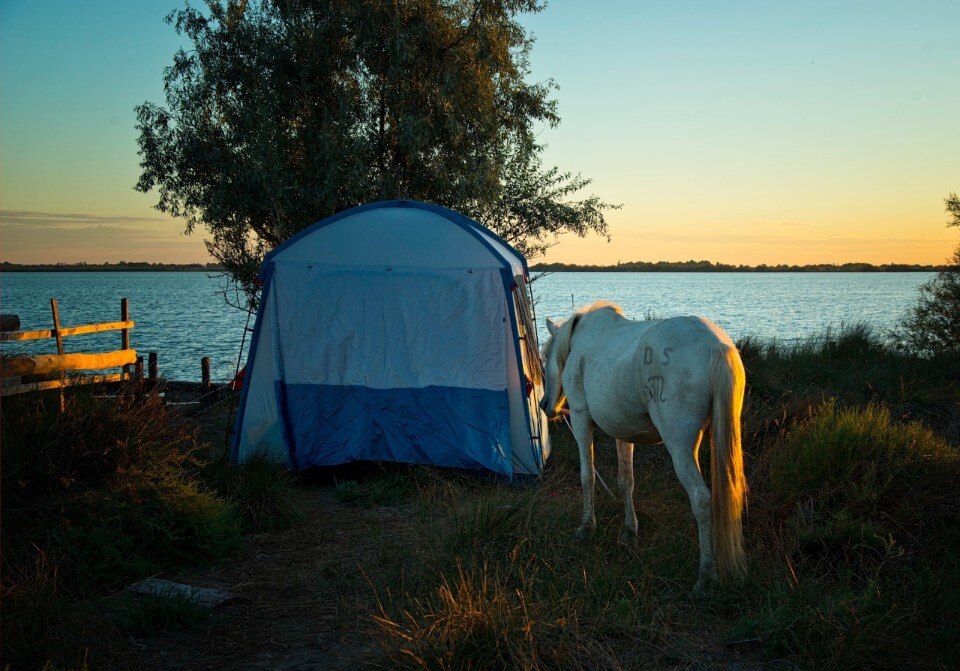
Until then, our films had always been recorded from the windows or balconies of houses, making videos of scenery in New York, Cape Town, Milan and Venice.
For the first time, we were filming outdoors. Curiously, we found out later from Serge's brother that the spot we had chosen was the exact location of a house he was about to build for himself.
That meant that what we were recording was the view from his future house.
None of us three had ever had experience with horses before, so it was with a great sense of wonder that we found ourselves spending almost two days in close contact with these large, curious animals. Just like them, we were immersed in the mud and tall grass.
None of us will ever forget the feeling of walking in the dark and feeling these big, soft bodies and warm nostrils nudging into us in the night. They snorted placidly, following us to our tent in anticipation of a carrot or a small apple, both of which we had bought in large quantities in order to secure their friendship.
I think the reason why a real connection developed so readily between them and us is because we remained exactly at their level for the entire time, bipeds among quadrupeds, without ever trying to dominate them.
In a short while, the tent became the herd's kindergarten, where the mares left the foals when they wished to refresh in the waters of the pond, and where they congregated at dawn to start the day.
I admit that several times, in order to keep a mare with foal in the lens at length, we made extensive use of carrots and apples as a type of primordial bribe.
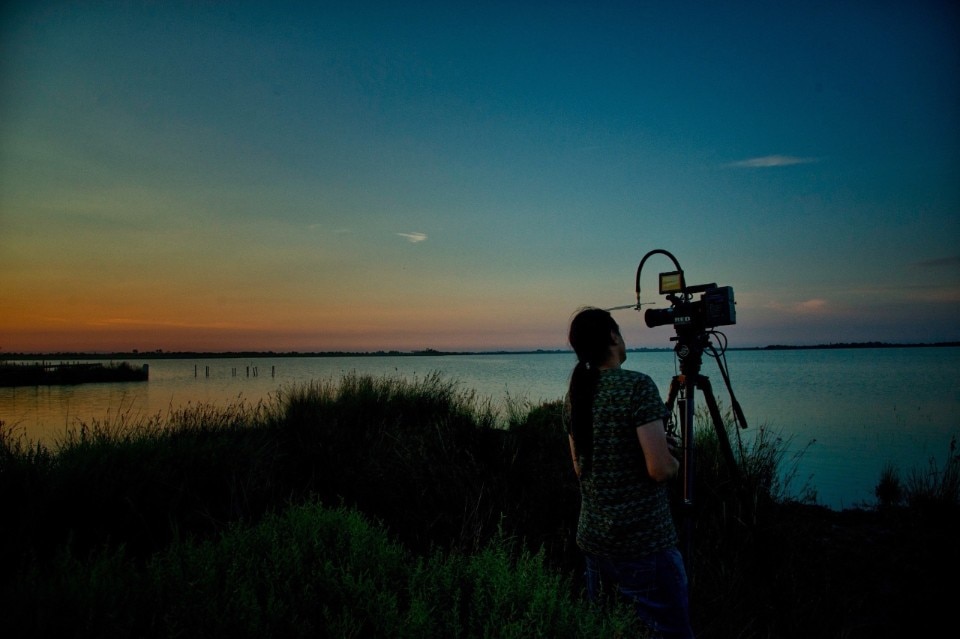
In the whole film we made at Maguelonne that day, you can often see mares looking directly at the camera, expecting their treats.
The hot day in mid July passed quickly with a brief afternoon rain shower and a light breeze on the water until 19:30, when finally the show that piqued our curiosity was to begin. To our surprise, over ten gardiens, as the caretakers of the horses are called, began rounding up the herd bareback and some even without reins. The mares and foals were herded toward the edge of the pond. The caretakers were all members of the Capitani clan, and seemed to be partaking in a private celebration more than putting on a performance for three foreigners operating a movie camera.
As the herd was gradually grouped together and the caretakers guided them toward the water, the excitement of the horses and horsemen intensified to the splashing of the water and the shouts of the men. Finally, the breathless race into the water at sunset seemed to release all their combined energy in a spectacle of primordial bucolic beauty. It was a vison of communion between men and animals united by ancient impulses and instincts – something that is difficult to situate in a specific era.
They were so intent on their horse fest that the show went on for over 40 minutes, with the horses running back and forth side by side with the foals until the end of the day and the beginning of dusk.
Then the night fell, bringing darkness and the conclusion of the shoot at midnight.
Unable to count on finding real windows on which to base our inspiration, we decided to recreate simple white window frames similar to ones we had seen in the town nearby. They are part and parcel of our movie.
We brought to London only a part of the film, the middle section, in order to keep the full-length version for a presentation at the Rossana Orlandi shop during the 2018 Milan Design Week.
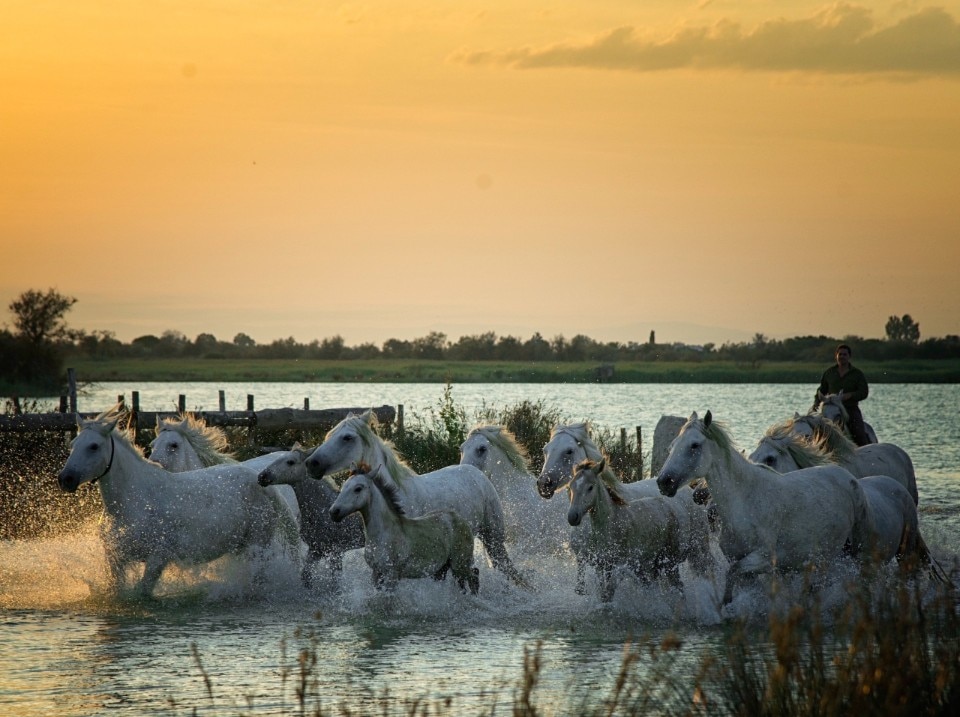
Today, when I watch the complete version of the video, I experience the same mixture of serenity and excitement as I did then. I like to think this is something that can be shared with people who decide to install it at home. They will be able to enjoy their very own summer's day in Southern France. They will be able to use this video like a natural clock, knowing after a while that a particular foal will drink from the far edge of the pond at 18:45, that two mares will approach the camera at 5:00 in the morning, and that when the flock of flamingos takes flight in the background, it is 16:00 in the afternoon.
It is a different way of perceiving time and feeling elsewhere when you are at home.


